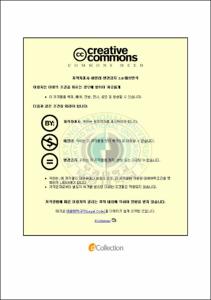한·일 중학교 고전문학 교육 비교
- Alternative Title
- Comparison of korea and Japanese Classical Literature Education in Middle School
- Abstract
- The purpose of this study was to make a comparative analysis of Korean and Japanese classical literature education in a bid to help determine some of the right directions for the improvement of Korean classical music education. Japan was selected since that country was adjacent to our country and there was mutual historical and cultural influence between the two.
Chapter I reviewed earlier studies.
Chapter II compared the Korean and Japanese middle school language arts curricula in terms of objectives, the number of lessons, and the structure of textbook and major units. The selection of classical literary works as topics in their language arts textbooks and learning activities were analyzed to shed light on the learning content and method about classical literature.
Chapter III discussed what improvements should be made in Korean classical literature education based on the results of the previous chapter. The problems with the editing of the current Korean language arts textbooks and the structure of major units were pointed out, and feasible reform measures were suggested.
As a result of making a comparative analysis of the language arts curricula of the two countries, it's found that there should be more clear guidelines in our country about the selection of topics and what should be noted in teaching classical literature. The selected topics of classical literature for different grades should be rearranged to ensure the sequence of the topics, and the topic selection criteria should be reviewed in consideration of the developmental stage of students.
In terms of learning content, reading-aloud and reciting activities should be included. Specifically, these kind of activities should be introduced in the genre of verse.
Like our country, Japan aimed at fostering the Japanese proficiency of learners, enriching their linguistic sense and letting them value their native tongue and put stress on reading-aloud and reciting activities. As a matter of fact, reading-aloud activities were very time-consuming, but it seemed that the small amount of language arts workload made it possible to perform a variety of learning activities.
In our country's language arts education, the weight of classical literature education was increasingly on the wane. The genres that were unnecessary for college admission weren't taught often even if they were included in the textbooks. The ongoing classical literature education should be revamped in terms of objectives, content, workload, topic selection criteria and learning methods in order for learners to be more familiar with classical literature and discover the true taste of it.
- Issued Date
- 2008
- Awarded Date
- 2008. 8
- Type
- Dissertation
- Keyword
- 한국 일본 고전문학 교육 비교 중학교 국어과 교육과정 비교 Korean and Japanese middle school language arts curricula in terms of
- Publisher
- 부경대학교 교육대학원
- Alternative Author(s)
- JU, Jung Ok
- Affiliation
- 부경대학교 교육대학원
- Department
- 교육대학원 국어교육전공
- Table Of Contents
- Ⅰ. 서론 = 1
1. 연구의 목적 = 1
2. 연구사 검토 = 2
Ⅱ. 한·일 중학교 고전 문학 교육 비교 = 7
1. 고전문학 교육 목표 및 교육 편제 비교 = 7
가. 고전문학 교육 목표 = 7
나. 국어과 시수 = 12
다. 비교 = 15
2. 고전문학교육 내용 비교 = 18
가. 『국어』교과서의 구성과 내용 체계 분석 = 18
나. 『국어』교과서에 수록된 고전문학 작품 분석 = 30
다. 비교 = 46
3. 교수·학습활동 비교 = 48
가. 한국 고전문학 단원의 학습활동 분석 = 48
나. 일본 고전 단원의 학습활동 분석 = 55
다. 비교 = 67
Ⅲ. 한국 고전문학 교육의 개선 방안 = 68
1. 고전문학 교육의 위상 재정립 = 68
2. 고전문학 교육의 내용 = 69
가. 교과서 구성 체계 조정 = 69
나. 교과서 수록 고전문학 작품 수록 비율 조정 = 74
다. 교과서 수록고전문학 작품의 제재 선정 기준 명시 = 75
3. 교수·학습활동에서의 개선 방안 = 76
가. 소리 내어 읽기 활동의 강화 = 76
나. 학습자의 발달 단계를 고려한 학습활동의 재구성 = 79
다. 적용학습의 학습활동 내용 개발 = 80
Ⅳ 결론 = 82
《참고문헌》 = 85
- Degree
- Master
- Files in This Item:
-
-
Download
 한·일 중학교 고전문학 교육 비교.pdf
기타 데이터 / 1.08 MB / Adobe PDF
한·일 중학교 고전문학 교육 비교.pdf
기타 데이터 / 1.08 MB / Adobe PDF
-
Items in Repository are protected by copyright, with all rights reserved, unless otherwise indicated.